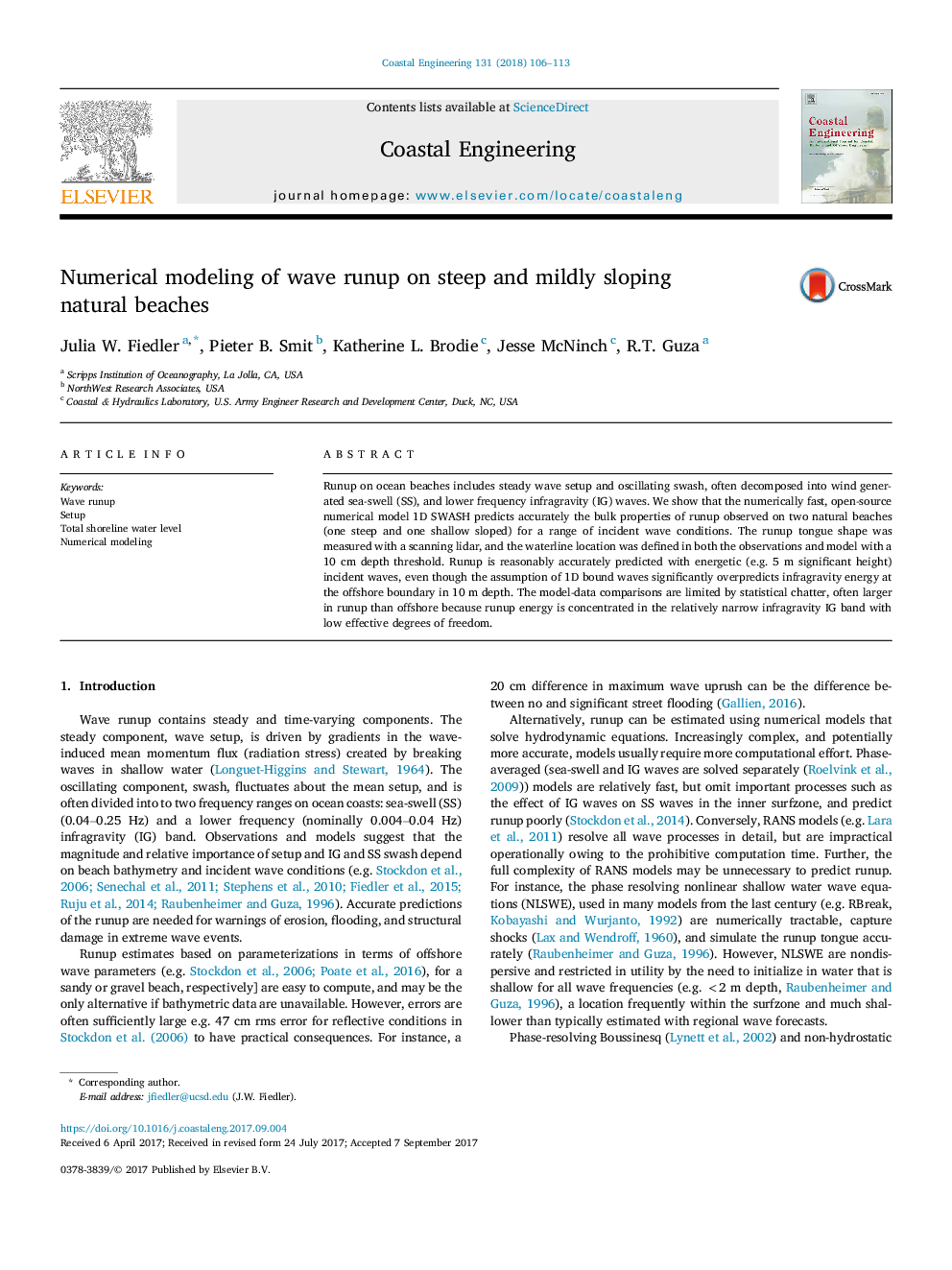| Article ID | Journal | Published Year | Pages | File Type |
|---|---|---|---|---|
| 8059605 | Coastal Engineering | 2018 | 8 Pages |
Abstract
Runup on ocean beaches includes steady wave setup and oscillating swash, often decomposed into wind generated sea-swell (SS), and lower frequency infragravity (IG) waves. We show that the numerically fast, open-source numerical model 1D SWASH predicts accurately the bulk properties of runup observed on two natural beaches (one steep and one shallow sloped) for a range of incident wave conditions. The runup tongue shape was measured with a scanning lidar, and the waterline location was defined in both the observations and model with a 10Â cm depth threshold. Runup is reasonably accurately predicted with energetic (e.g. 5 m significant height) incident waves, even though the assumption of 1D bound waves significantly overpredicts infragravity energy at the offshore boundary in 10Â m depth. The model-data comparisons are limited by statistical chatter, often larger in runup than offshore because runup energy is concentrated in the relatively narrow infragravity IG band with low effective degrees of freedom.
Keywords
Related Topics
Physical Sciences and Engineering
Engineering
Ocean Engineering
Authors
Julia W. Fiedler, Pieter B. Smit, Katherine L. Brodie, Jesse McNinch, R.T. Guza,
